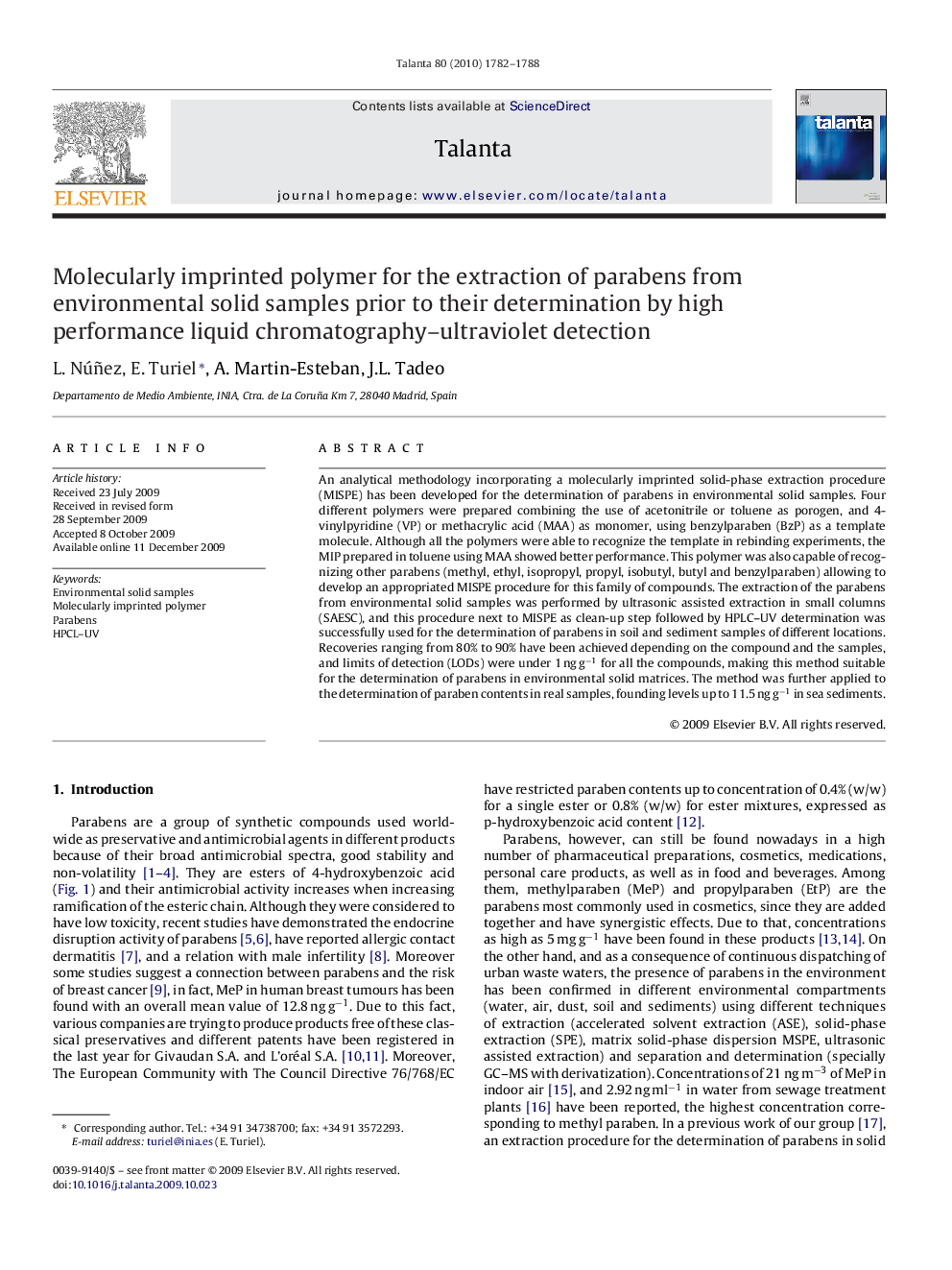| Article ID | Journal | Published Year | Pages | File Type |
|---|---|---|---|---|
| 1242981 | Talanta | 2010 | 7 Pages |
An analytical methodology incorporating a molecularly imprinted solid-phase extraction procedure (MISPE) has been developed for the determination of parabens in environmental solid samples. Four different polymers were prepared combining the use of acetonitrile or toluene as porogen, and 4-vinylpyridine (VP) or methacrylic acid (MAA) as monomer, using benzylparaben (BzP) as a template molecule. Although all the polymers were able to recognize the template in rebinding experiments, the MIP prepared in toluene using MAA showed better performance. This polymer was also capable of recognizing other parabens (methyl, ethyl, isopropyl, propyl, isobutyl, butyl and benzylparaben) allowing to develop an appropriated MISPE procedure for this family of compounds. The extraction of the parabens from environmental solid samples was performed by ultrasonic assisted extraction in small columns (SAESC), and this procedure next to MISPE as clean-up step followed by HPLC–UV determination was successfully used for the determination of parabens in soil and sediment samples of different locations. Recoveries ranging from 80% to 90% have been achieved depending on the compound and the samples, and limits of detection (LODs) were under 1 ng g−1 for all the compounds, making this method suitable for the determination of parabens in environmental solid matrices. The method was further applied to the determination of paraben contents in real samples, founding levels up to 11.5 ng g−1 in sea sediments.
